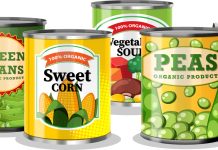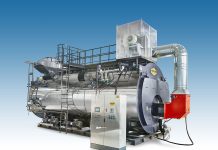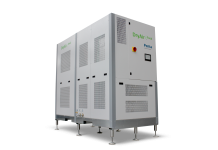
Thermal treatments are not the only system suitable for food stabilization. All alternatives tend to retain the nutritional and organoleptic properties of food products, without jeopardizing the hygiene and health safety. Among the emerging technologies: high pressures, plasma, supercritical CO2, microwaves and radio-frequency.
To stabilize and preserve food products means to prevent their decomposition carried out by micro-organisms. To preserve means to eliminate micro-organisms or to inhibit their action. High temperature treatments certainly ensure a high food safety level at industrial level, in order to extend the product shelf-life.
High temperature treatments
Food stabilization by means of high temperature treatments is a long-standing practice in the food industry, and is based on a time/temperature combination, depending on the product and the desired product shelf-life. The treatment eliminates the micro-organisms and inactivates the enzymes present in foodstuffs. A good thermal treatment must combine two major issues: food safety from the microbiological point of view and preservation, as far as possible, of its nutritional and sensory features. Quick thermal treatments, so-called HTST (High Temperature Short Time), combine the sterilizing effect with a minimal damage to the product quality. For products consisting of various heterogeneous phases, the single components can be dealt with the most suitable time/temperature treatment, thus avoiding nutrient losses, mixing of components and the relevant transfer of flavours. Even with these general measures, however, high temperature treatments alter the nutritional (enzymes, proteins, vitamins, etc.) and organoleptic (colour, shape, texture, etc.) properties of foodstuff. Tinned meats, for instance, register variations from oxymyoglobin to metamyoglobin, deamination reactions and decarboxylation. Adverse effects on fruit and vegetables result in changes of the colour, texture and flavour. Chlorophyll, for instance, is transformed into pheophytin, which absorbs light (included green), and changes to brown; furthermore, there are degradative, re-assortment and volatilisation reactions of aldehydes, chetones, and sugars. Legumes and cereals are rich in starch, and often soften. Due to the coagulation of proteins and the loss of water-binding capacity, meat undergoes to variations in the structural features. In fruit and vegetables, the loss of consistency derives from pectins hydrolysis.
Alternatives to the thermal treatment
Thermal treatments are not the only methods for stabilizing foodstuff in order to extend their shelf-life. All alternatives, those already in use by the food industry and those at experimental stage, are aimed at the best preservation of food nutritional and organoleptic properties, without jeopardizing hygiene and health safety. Among the most widespread technologies, which are attracting considerable interest in the food industry, there are high pressures, plasma, supercritical CO2, microwaves and radio-frequencies.
High pressures
Some foodstuffs are particularly sensitive to damages caused by thermal treatments, and for this reason they require alternative stabilization methods. One of them, and precisely the HPP technology (High Pressure Processing), uses high pressures suitable for the microbiological stabilization of liquid and solid foodstuffs. This technology uses pressures up to 6000 atmospheres. Next to reducing the bioburden, high pressures can improve food texture without altering its nutritional and organoleptic properties. Furthermore, unlike foodstuffs submitted to thermal treatment, those treated with HPP technology have a fresher appearance. High pressures are excellent for all liquid products, such as milk-based drinks, fruit juices, pulped tomato pulp, soups and sauces. Solid foods undergoing to HPP technology are packed in flexible packages that must be able to resist the isostatic compression of the product, and are then loaded in the high-pressure chamber. Once the autoclave is closed, it is filled with water that then becomes pressurized through a system of pumps and pressure multipliers. The water indirectly compresses the product by transferring the pressure. In this phase, the temperature increase is very limited and on the order of 15 to 20°C. After the exposure period is over, the pressure is quickly lowered, the water that was added to the press is expelled, and then the press can be opened and the products unloaded. As the pressure is released, the temperature immediately drops back to the initial level. The process, in fourth generation machines, involves a net exposure time of around 4 to 5 minutes. The process for packaged food, as for instance sliced meats, is still a discontinuous process, and the on-line processing is being developed. However, there are some restrictions that narrow the implementation field of HPP technology, which proves to be ineffective with regard to bacterial spores. Furthermore, it cannot be applied to dry foodstuffs, because they do not contain enough water to carry the high pressures; and to spongy products such as baked goods, which would not resist to the applied pressure. The HPP technology is already widely in use in many countries like the U.S., Japan and Australia, and less in Europe.
Plasma
There is another physical treatment which does not exploit heat for the pasteurization of food. It is the CAPP technology (Cold Atmospheric Pressure Plasma). Plasma (i.e. a ionized gas that can be generated by applying an electrical field to an initially electrically neutral gas) is a source of UV radiation, charged particles and reactive oxygen species, such as superoxide and hydroxyl radicals, and provides a bactericidal effect on the outer surface of food.
 Supercritical CO2
Supercritical CO2
There are on-going feasibility studies with food processing companies to treat and preserve foodstuffs with supercritical CO2. This is again an alternative technology, which does not alter the nutritional properties of food, since it operates at temperatures near ambient temperature. The use of carbon dioxide in contact with food is particularly interesting thanks to its non-toxic, non flammable, antimicrobial characteristics; furthermore, it is inert, available at low cost in high purity, and recyclabl; it has a low environmental impact and contributes to cut costs. The treatment is based on the negative action of CO2 on micro-organisms, around and above its critical point (31°C and 73 bar), which leads to the reduction of the bioburden, without altering the nutritional or physical properties of food. A plant has been recently designed for the pasteurization in continuous mode of liquid food, such as milk, water, fruit juice and must. After an adequate contact time between carbon dioxide fluid in supercritical state and the liquid to be pasteurized, the liquid is degassed through a vacuum pump. A continuous process has been developed for treatment of solid substrates, such as fruit, vegetables and meat-based products, and precisely ready-to-eat food including ham and other cold cuts. The process with supercritical CO2 has proved effective for low-temperature pasteurization of these products.
Microwaves
Microwaves can be used to stabilize food containing water, the primary component responsible responsible for heating. Water molecules tend to re-orientate with the high frequencies oscillating fields, producing heat from collisions with near particles. Microwaves penetrate in shorter times compared to conventional thermal treatments, and inflict lower damage to the treated product. Furthermore, a reduction in treatment times provides a reduction in energy costs. The result is improved nutritional characteristics thanks to the reduced loss of vitamins. With microwaves, the product can be cooked during the stabilization treatment. This technology is extremely flexible, and is suitable to pasteurize, sterilize, defrost, dehydrate foodstuff. Microwaves can be combined with IR radiation, hot air, and saturated steam to heat, maintain the temperature, and pasteurize the treated foodstuff. In fact, microwaves heat the product starting from its core, whereas IR radiation heats its surface. Infra-red heating provides the crispiness of the food product, whereas hot air removes the excess moisture released by the food as a consequence of the microwave treatment.
 Radio frequency
Radio frequency
Radio frequency can be used for the pasteurization of packaged solid food up to the sterilization of – even highly viscous – liquids, as long as they are pumpable: diced fruit and vegetables, marmalades, fruit jams for yoghurt and confectionery products, milk-based creams, milk and dairy products, vegetable drinks, purées, fruit juices, and eggs. RF can be used to stabilize fresh durum wheat pasta, by means of an integrated drying and pasteurization process on a continuous plant. Here, the characteristic of radio-frequency is exploited to quickly and uniformly heat the products to be treated. The method consists in exposing food to electro-magnetic waves having the wavelength typical of radio waves. The radio frequency technology grants several advantages compared to conventional heating systems. Simpler production process thanks to shorter processing times (very short temperature curve) leads to a reduction of production costs, with relevant energy savings and increase in production capacity. Further benefits include improved quality and organoleptic characteristics of the finished product, as colour, taste and texture. Sterilization occurs at lower temperatures, the treatment is uniform and without laminar effect, and with a lower formation of residues.




